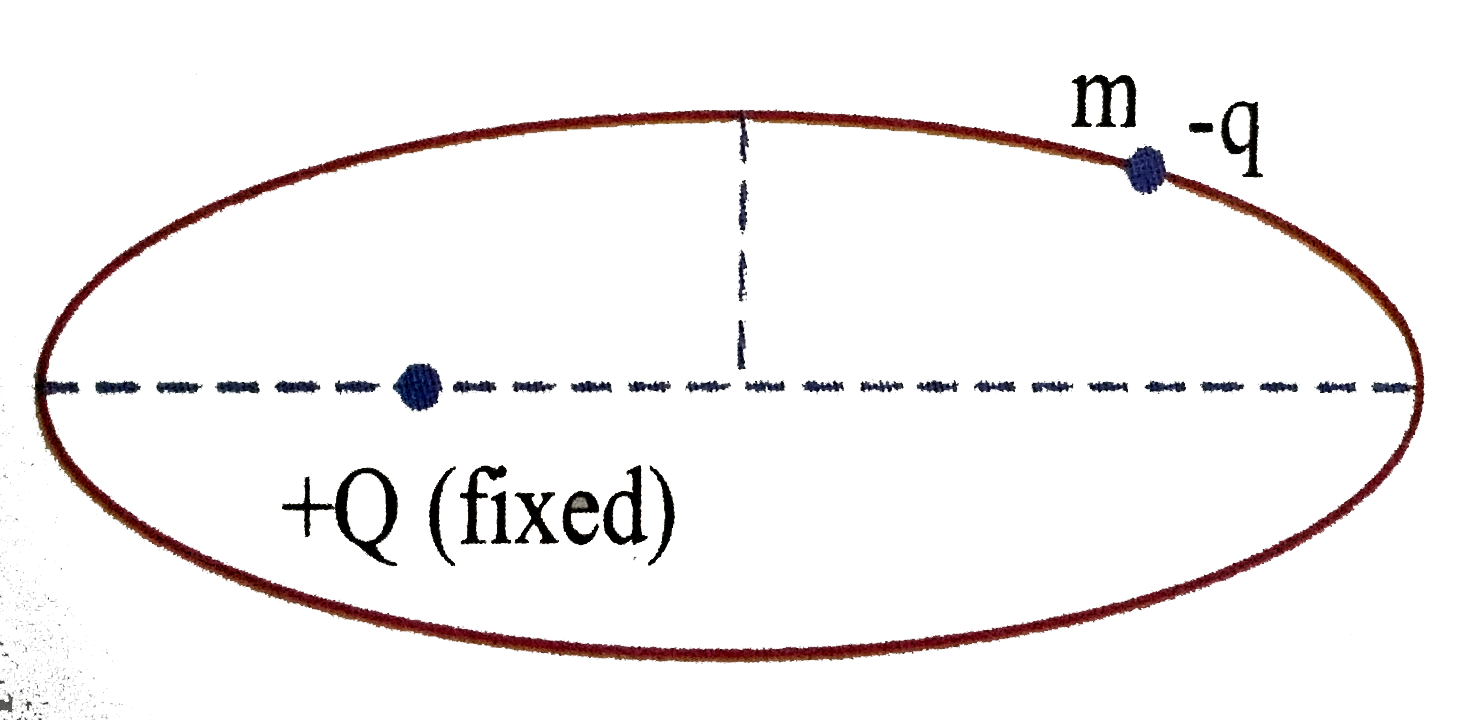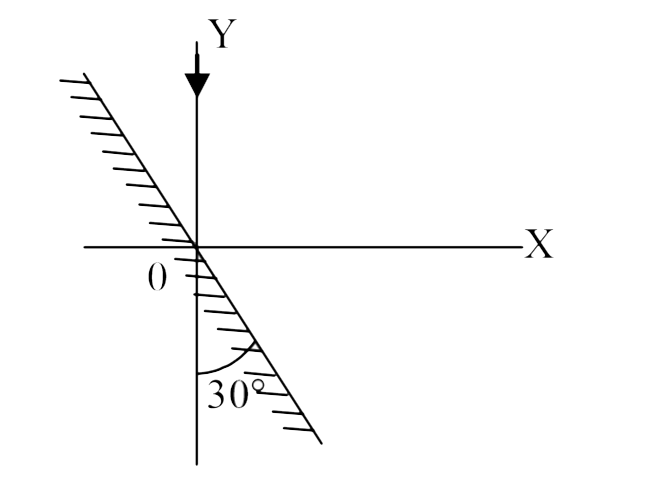A positive point charge +Q is fixed in space .A negative point charge −q of mass m revolves around a fixed charge in elliptical orbits .The fixed charge +Qis at one focus of the ellipse.The only force acting on negative charge is the electrostatic force due to positive charge is the electrostatic force due to positive charge.Then which of the following statement is true

Linear momentum of negative point charge is conserved
Angular momentum of negative point charge about fixed positive charge is conserved
Total kinetic energyofnegative point charge is conserved
Electrostatic potential energy of system of both point charges is conserved
Step by step video & image solution for A positive point charge +Q is fixed in space .A negative point charge -q of mass m revolves around a fixed charge in elliptical orbits .The fixed charge +Q is at one focus of the ellipse.The only force acting on negative charge is the electrostatic force due to positive charge is the electrostatic force due to positive charge.Then which of the following statement is true by Physics experts to help you in doubts & scoring excellent marks in Class 12 exams.
Updated on:21/07/2023Topper's Solved these Questions
- ELECTROSTATICSBOOK - PHYSICS GALAXY - ASHISH ARORACHAPTER - ELECTROSTATICSEXERCISE - Numerical MCQs Single options Correct
64 Videos
- ELECTROSTATICSBOOK - PHYSICS GALAXY - ASHISH ARORACHAPTER - ELECTROSTATICSEXERCISE - Advance MCQs
40 Videos
- ELECTROSTATICSBOOK - PHYSICS GALAXY - ASHISH ARORACHAPTER - ELECTROSTATICSEXERCISE - Discussion Question
25 Videos
- ELECTROMAGNETIC INDUCTION AND ALTERNATING CURRENTBOOK - PHYSICS GALAXY - ASHISH ARORACHAPTER - ELECTROMAGNETIC INDUCTION AND ALTERNATING CURRENTEXERCISE - Advance MCQs
33 Videos
- GEOMETRICAL OPTICSBOOK - PHYSICS GALAXY - ASHISH ARORACHAPTER - GEOMETRICAL OPTICSEXERCISE - Unsolved Numerical Problems
107 Videos
Similar Questions
State superposition for electrostatic force on a charge due to a number of charges.
View SolutionA positive charge Q is fixed at a point in space. There is another charge -q, which moves in a circular path of radius r around the given fixed charge . Assume that the electrostatic force between them is the only force acting on them. Calculate time period of revolution of charge .
View Solution
Knowledge Check
A charge +q is fixed to each of three corners of a square .On the empty corner a charge Q is placed such that there is no net electrostatic force acting on the diagonally opposite charge then
AQ=−2qBQ=−2√2qCQ=−√2qDQ=−4qTwo point charges of same magnitude and opposite sign are fixed at point a and B. A third small point charge is to be balanced at point P by the electrostatic force due to these two charges. The point P :
 Alies on the perpendicular bisector of line ABBis at mid point of line ABClies to the left of ADnone of these
Alies on the perpendicular bisector of line ABBis at mid point of line ABClies to the left of ADnone of theseNegative charge is revolving around is fixed positive charge in a circular orbit If the classical idea of an accelerating charge rediating energy is valid, then the negative charge will:
Aspiral towards the positive charge, with increasing kinetic energyBspiral towards the positive charge with potential energy decreasing at a faster rate then increase in its kinetic energy.Cspiral away from the positive charge and finally escape from the binding of the positive chargesDrevolve around the positive charge with increasing frequency of revolution.
Two positive point charges A and B have charge +q and +2q; mass m and 2m respectively. Both the charges are released from rest when they are at a distance l0 apart. Neglect gravity and also assume the only force acting on either charge is the electrostatic force due to each other. The speed of charge A at the instant separation between both charges is 2l0
View SolutionA positive point charge q1 is placed at (a,0) and another positive point charge q2 is placed at (0,a) . Find the force acting on q1.
View SolutionTwo equal negative charges are fixed at points and on y-axis. A positive charge Q is released from rest at the point on the x-axis. The charge Q will:
View SolutionPositive point charges are placed at the vertices of a star shape as shown in the figure. Direction of the electrostatic force on a negative point charge at the centre O of the star is

View SolutionA point charge Q is moved along a ciruclar path around another fixed point charge. The work done is zero
View Solution
